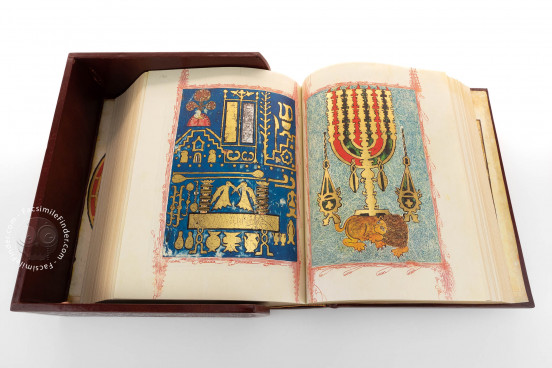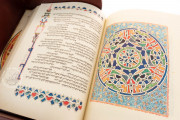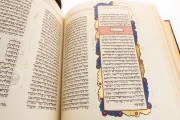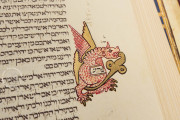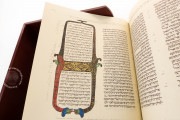The famous Kennicott Bible is one of the most sumptuous medieval Spanish manuscripts in existence. Written and illuminated in the last quarter of the fifteenth century, the codex is named after Benjamin Kennicott, the English Hebraist (1718-1783) who continued the English tradition of studying the Hebrew bible, spending his life comparing textual variants of hundreds of Hebrew manuscripts worldwide.
In the course of his work Kennicott acquired this manuscript, which, in addition to its traditional Masoretic text, features an elaborate and imaginative decoration that still survives today.
Commissioner of the Kennicott Masterpiece
The origin of the Kennicott Bible has been identified in north-western Spain, where the work was commissioned for Isaac, son of Don Solomon de Braga, to one Moses Ibn Zabara, who copied the Tenach (Old Testament) together with Rabbi David Kimchi's (RaDaK) grammatical treatise Sefer Mikhlol.
The scribe provides, in a lengthy colophon, finished the work in the town of La Coruña, on Wednesday, the third day of the month of Av in the year 5236 from the creation corresponding to July 24, 1476.
The Importance of the Jewish Heritage
The manuscript, executed at a time when the Jews—targeted by the Spanish Inquisition—were constantly harassed until their final expulsion in 1492, shows the significance of perpetuating the Jewish heritage with the creation of lavishly made manuscripts.
Lively colors, burnished gold, and silver leaf illuminate more than 200 pages of the Bible, and they are the work of the Jewish artist Joseph Ibn Hayyim.
The Unique Style and Creativity of the Kennicott Bible
The iconography of the manuscript features highly stylized figures showcasing a richness of colors. It is worth noticing the zoomorphic and anthropomorphic letters in the artist's colophon, which are an indication of his unique creativity.
Among the many illustrations depicted in the Bible we find King David on his throne, Jonah being swallowed by a fish, or Balaam as an astrologer consulting an astrolabe, all representing the individual style of the artist.
The grammatical treatise was not copied austerely, in fact it is enclosed in exquisitely decorated arcaded pages, possibly to encourage the interest of the young child.
This completely vocalised Bible is hand-written in a clear Sephardi script of the Middle Ages.
Fortunately, the binding has survived the centuries and it is as lavish as the manuscript itself, for it is a morocco goatskin box binding, blind-tooled on all six sides and embellished with cut-out endpapers echoing the intricate motifs of the carpet pages dividing the Bible into its three main sections.
We have 1 facsimile edition of the manuscript "Kennicott Bible": The Kennicott Bible facsimile edition, published by Facsimile Editions Ltd., 1985
Request Info / Price

